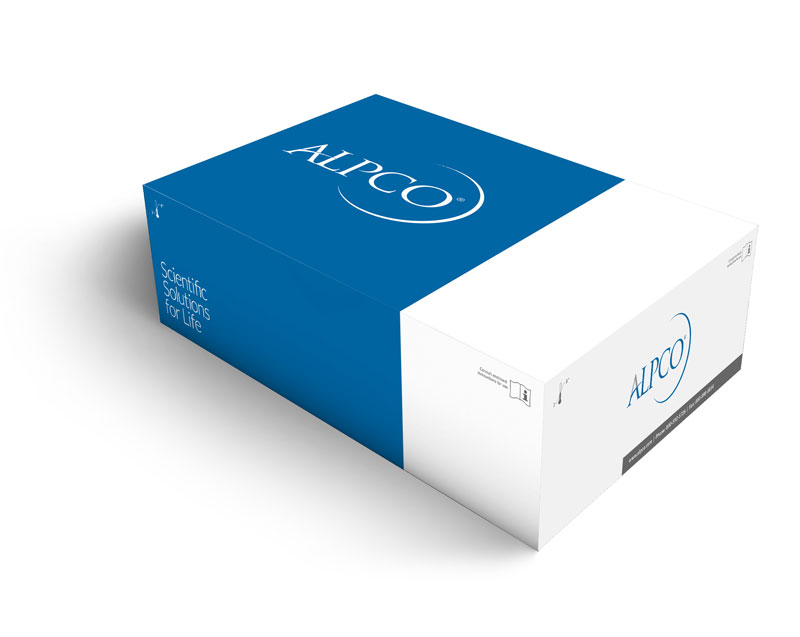EOY Academic Discount
2023 Academic Discount* for Select Diabetes ELISA Kits ALPOC is excited to offer an exclusive, limited-time discount to academic institutions performing diabetes and obesity research.
Catalog Number
Description
List Price
80-INSHU-CH01
Human Ins...
Advance your GLP-1 research with optimized assays
Advance your GLP-1 research with optimized assays
The growing interest in GLP-1 receptor agonists underscores their potential, not only in helping manage diabetes and obesity, but also in offering possible benefits for kidney and heart health.
We offer an extensive portfolio of immunoassays o...
Tips & Tricks
The Enzyme-Linked Immunosorbent Assay (ELISA) is a proven sensitive method for detecting and quantifying specific biomarkers in a wide range of clinical and research samples. The accuracy and precision of ELISAs can be affected by many factors, including pipetting, washing, and sample-handling techn...
Responsibility
ALPCO’s Diabetes Research Travel GrantALPCO strives to provide scientists and healthcare professionals with robust tools for their research and clinical diagnostic endeavors. We understand that championing extraordinary discoveries requires extraordinary efforts, and support. We are proud to continu...
Introducing the STELLUX® Chemi Active GLP-1 (7-36) amide ELISA
Watch our video to learn more about the STELLUX® Chemi Active GLP-1 (7-36) amide ELISA and how you can now measure this incretin hormone with confidence.
https://www.youtube.com/watch?v=Chu3VhEEpt0&t=3s
The STELLUX® Chemi Active GLP-1 (7-36) amide ELISA features increased sensitivity to ac...
An Accurate Solution to the Challenges with Measuring GLP-1
Glucagon-like peptide-1 (GLP-1) is a gut hormone which plays an essential role in insulin secretion and glucose homeostasis1. While GLP-1 has become central to many metabolic disease research programs, various GLP-1 ELISA kits currently available on the market have been failing to meet the needs of ...
How DPP-4 Complicates Measuring GLP-1 Accurately
We know that the proper collection and handling of samples is vital for eliminating analytical variability and improving accuracy when measuring active GLP-1 (7-36) amide.
ALPCO is here to help your lab reduce technical errors and improve assay results when running the STELLUX® Chemi Active GLP-1...
A Guide to STELLUX® Chemiluminscence ELISAs: An Infographic
Today, multiple immunoassay platforms exist, providing scientists and clinicians with the means to measure a variety of biomarkers1,2,3. However, research indicates some immunoassay platforms have limitations that can inhibit progress in the laboratory4,5,6. In an effort to provide researchers with ...
A Comparison of Colorimetric and Chemiluminescence ELISAs
Are you curious about chemiluminescence ELISAs, but not exactly sure what they are, or how to use them? Our video A Comparison of Colorimetric and Chemiluminescence ELISAs discusses how similar these two types of assays are, and how they can enhance your lab testing.
Watch our video to:
Lear...
12 ELISA Tips and Tricks: An Expert’s Guide to Improve Your Technique
The Enzyme-Linked Immunosorbent Assay (ELISA) is a proven sensitive method for detecting and quantifying specific biomarkers in a wide range of clinical and research samples. The accuracy and precision of ELISAs can be affected by many factors, including pipetting, washing, and sample-handling techn...
Diabetes and Obesity
Diabetes and Obesity Learning Library!
As a leading provider of testing solutions for the diabetes and obesity research community, we support scientists’ efforts to gain a greater understanding of these conditions. With no cure for type 1 or type 2 diabetes and a lack of effective obesity treatment...
Immunoassays for Intact and Total Proinsulin
ALPCO is pleased to announce the availability of two new immunoassays, the Intact Proinsulin ELISA and the Total Proinsulin ELISA. Proinsulin is a precursor molecule produced by pancreatic ß-cells, primarily in response to glucose, that is cleaved equally into insulin and c-peptide. Elevated le...
Celebrating Diabetes Research
In honor of scientists and researchers in the field of diabetes, we've compiled a partial list of their 2023 published work. These publications aren't just studies; they're milestones on the path to a healthier future, made possible by their dedication.
What makes this list so ...
Product Data: Insulin Chemiluminescence ELISA
ALPCO’s Insulin Chemiluminescence ELISA detects insulin at levels as low as 20 pg/mL in human serum, plasma, and β-islet tissue culture supernatants, without cross-reactivity to human intact proinsulin, mouse insulin, or rat insulin.
Product Data: Active GLP-1 (7-36) amide Chemiluminescence ELISA
ALPCO’s Active GLP-1 (7-36) amide Chemiluminescence ELISA accurately measures the major biologically active circulating form of GLP-1.1,2 This well-characterized assay provides high analytical sensitivity, a short incubation time, and measures active GLP-1 (7-36) amide in fasted and fed samples.
ALPCO Releases STELLUX® Chemiluminescent Human Intact Proinsulin ELISA
ALPCO announced in a press release on February 18, 2014 that the company has launched their new STELLUX® Chemiluminescent Human Intact Proinsulin ELISA, the latest assay to be launched in the company’s STELLUX® Chemiluminescent product line. The new Human Intact Proinsulin ELISA features a broad dyn...
ALPCO Releases New Chemiluminescent Human C-peptide ELISA
ALPCO announced the launch of its new STELLUX® Chemiluminescent Human C-peptide ELISA on December 5, 2014. This highly characterized assay measures C-peptide requiring only 50 µL of human serum, plasma or cell culture supernatant. The ELISA exhibits greater sensitivity and a broader dynamic range co...
Complement System Solutions for Drug Development and Clinical Research
Datasheet: Complement System Immunoassays
Download
The complement system is essential to innate immunity which protects from chronic, autoimmune, and infectious disease. There are three distinct pathways of complement activation: classical, lectin/MBL, and alternative. Each leads...
 STELLUX® 4400 Chemiluminescence Plate Reader
STELLUX® 4400 Chemiluminescence Plate Reader Rat Insulin ELISA Jumbo Pack (10 Plates)
Rat Insulin ELISA Jumbo Pack (10 Plates)